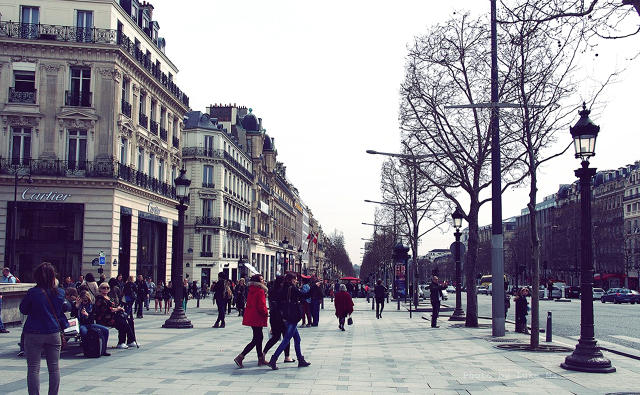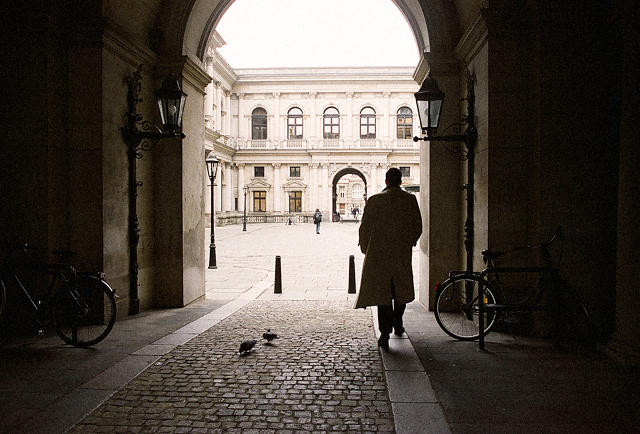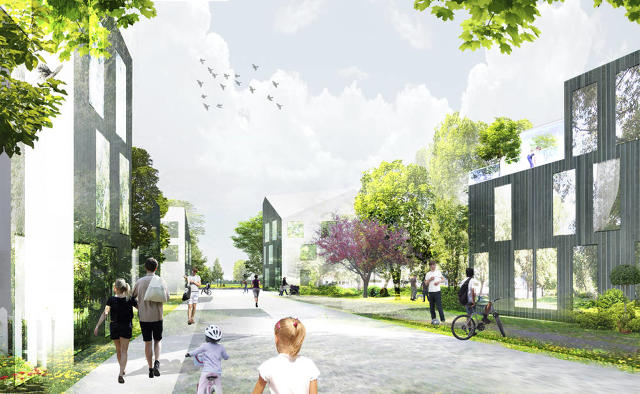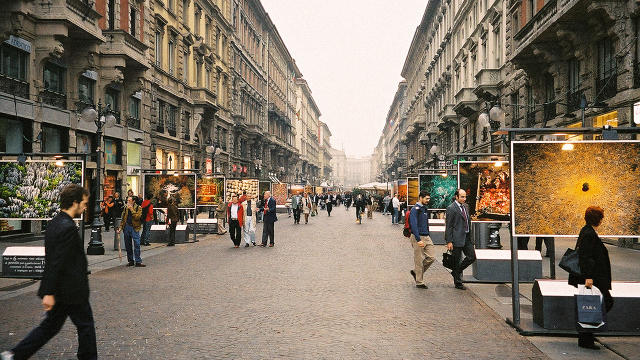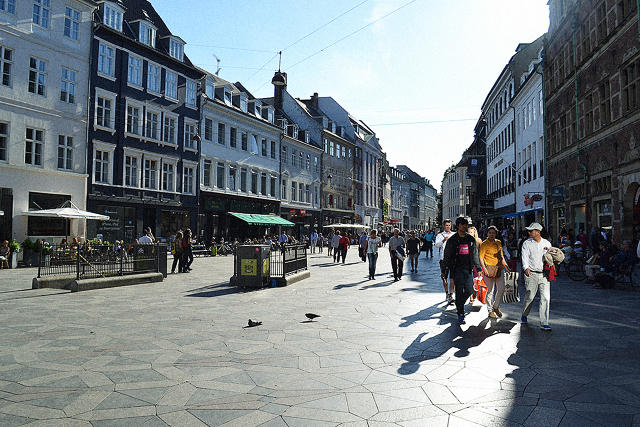Зеленый город как шанс для человечества
Оказывается, понятие «зеленый» по отношению к городу имеет вполне четкий смысл. Зеленый город – такой, который не оставляет грязного следа в окружающей среде. Получающий энергию от солнца, ветра и прочих возобновляемых источников вместо сжигания ископаемого топлива. Максимально использующий естественный обогрев и вентиляцию – вместо сверхмощных кондиционеров. Без чадящих в бесконечных пробках потоков машин. Отправляющий весь мусор в переработку, а не заваливающий им окрестные поля и леса. А сами поля вокруг города и даже в нем самом – используются для выращивания свежих продуктов и отдыха горожан, а не в качестве очередных стройплощадок.
Для многих, наверняка, это звучит утопично. Но фантастика быстро становится явью. Мюнхен с населением больше миллиона – планирует полностью перейти на возобновляемую энергию для нужд городского хозяйства и электроснабжения всего лишь за 10 лет, к 2025 году. Но он не будет первым таким городом – это уже сделал 40-тысячный Берлингтон в США. Есть даже целая страна, у которой это получилось: Коста-Рика уже 75 дней как не использует ископаемое топливо для производства электроэнергии
Проблема мусора тоже успешно решается, было бы желание. Например, в Швеции, где в переработку идет 99% собранного мусора. Вот здесь можно прочитать замечательный репортаж Олега Козырева о том, что делают с мусором в голландских городах.
Сложнее всего, пожалуй, с транспортом. Иногда власти идут на беспрецедентные меры, чтобы уменьшить количество автомобилей, заполонивших улицы. Когда Париж обнаружил, что начинает оспаривать «пальму первенства» по загрязнению воздуха у китайских и индийских мегаполисов – он ввел драконовские ограничения на использование автомобилей, поставив целью сократить автомобильный трафик в 2 раза. Зато общественный транспорт был сделан полностью бесплатным!
Но главное – транспортные проблемы в городе решаются в первую очередь не транспортом, а грамотной градостроительной политикой. Современный зеленый город спроектирован так, чтобы избавить большинство жителей от долгих рутинных поездок. Здесь нет отрезанных от всего мира спальных районов, из которых нужно добираться по пробкам до работы, поликлиники или магазина: большинство того, что нужно людям в повседневной жизни, расположено в шаговой доступности от дома. Здесь не нужно ехать десятки километров, чтобы отдохнуть на природе – потому, что до нее можно дойти пешком, доехать на велосипеде или на лыжах.
Ну и о продуктах, лекарственных травах, цветах и прочем – все это можно выращивать рядом с городом или даже в нем, снижая потребности в транспорте и создавая дружественную для людей среду.
Интересно, что «научное» и «интуитивное» представление о зеленом городе во многом совпадают: необходимость естественного охлаждения и поглощения осадков и вредных веществ за счет деревьев, использование естественного освещения в домах, рабочие места, магазины, школы, леса и парки шаговой доступности – неизбежно делают город комфортным для жизни.
Муравейники в десятки этажей, прижавшиеся друг к другу посреди моря асфальта, не могут быть зелеными, чтобы ни писали девелоперы в своих проспектах. Жизнь в таком “человейнике” приводит к нервным стрессам и проблемам со здоровьем. Например,многомиллионный мегаполис Москва занимает первое место в России по онкозаболеваниям, невзирая на высокие доходы москвичей по сравнению с другими россиянами.
Кто же сделает наши города зелеными?
От степени озеленения города, от чистоты воздуха и воды зависит здоровье граждан. Сделать города зелеными становится вопросом выживания всего человечества. Но кто будет инициатором перемен?
Многочисленные примеры показывают, что власть и бизнес вряд ли станут ведущими в этом процессе, пока не сформирована воля и готовность горожан сделать свой город по-настоящему здоровым и пригодным для жизни. И движущей силой здесь становится не только инстинкт самосохранения, но и любовь к тому месту, где живешь, чувство сопричастности к судьбе «малой родины». Если мы посмотрим на города, сделавшие уверенные шаги в зеленое будущее, то очень часто увидим сплоченные сообщества жителей, для которых «зеленый город» – желанный образ конечного результата и руководство к действиям.
Так произошло, например, во Фрайбурге, признанным одним из лидеров зеленого градостроения в Германии. Исторически сформировавшееся на базе академической среды местное сообщество получило «боевое крещение» в 1970-х, в ходе протестов против планов построить рядом атомную электростанцию. Ответом жителей на планы атомщиков стали не только протесты (успешные, кстати) – но и настоящая зеленая революция городского масштаба. Вот, например, впечатления очевидца от построенного во Фрайбурге городского жилища будущего.
Фрайбург – зеленый город 21 века. Фото пользователя naturalflow, flickr.com
«На улице 6 градусов Цельсия, земля припорошена выпавшим снегом… Но в квартире Майнхарда Хансена продолжается непрерывное лето, солнце попадает внутрь через высокие выходящие на юг окна, а термометр на стене показывает 24 градуса. Рядом с ним, в небольшом стеклянном окошке видны слова – ‘Heizung 0’ (обогрев – 0 переводит Майнхард). «На самом деле, мы не включали отопление неделями». Радиатор на стене есть, но он абсолютно холодный. Прекрасно защищенная слоем пены и теплоизоляции толщиной до 30 см квартира имеет тройные стекла и надежно защищена от внешних воздействий. Свежий воздух забирается на уровне потолка и проходит через тоннели в стенах рядом с воздухом, выбрасываемым наружу. «Тепло от выходящего теплого воздуха передается свежему воздуху, который затем попадает в квартиру» – говорит Майнхард, главный архитектор Фрайбурга и мировая знаменитость в области зеленого строительства».
Горожане смогли ответить планам атомщиков делами, показав не только опасность, но и ненужность строительства АЭС.
http://world.350.org/russian/2015/05/green-city2/


